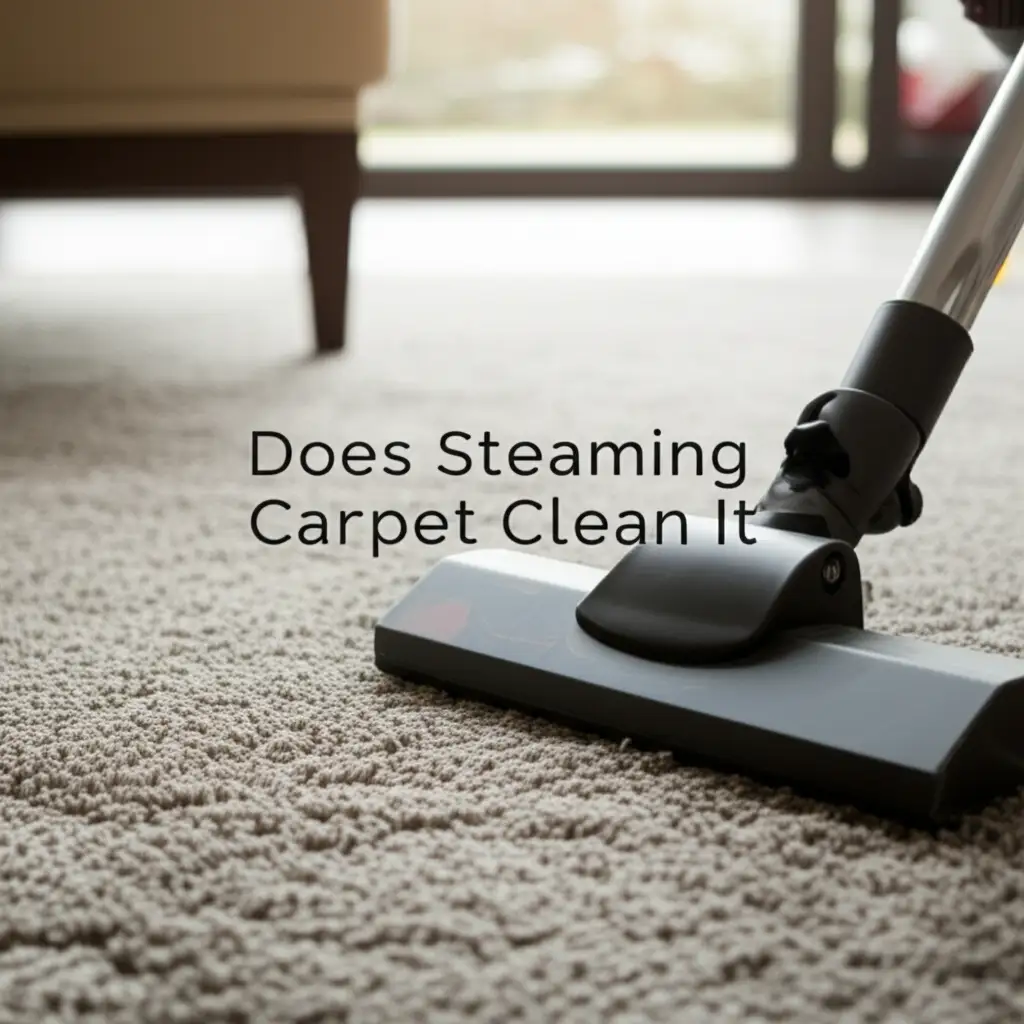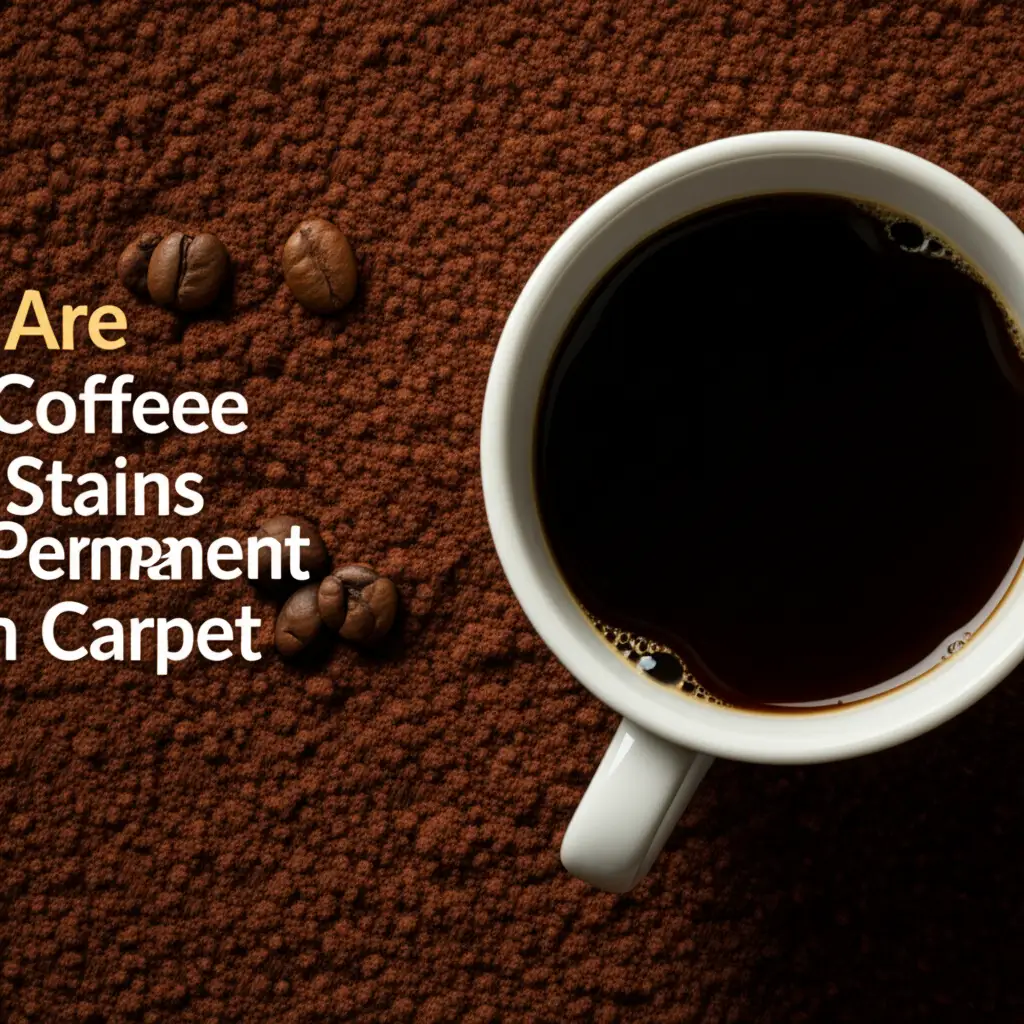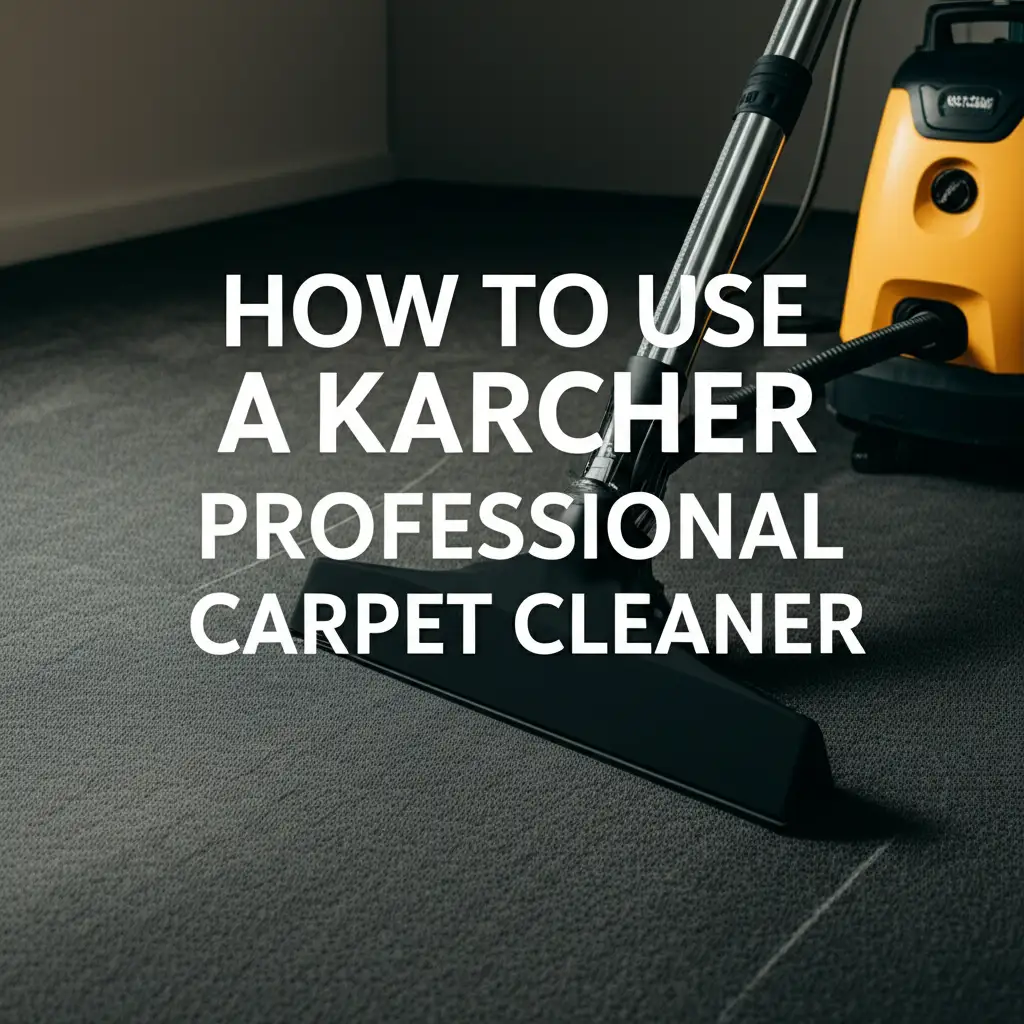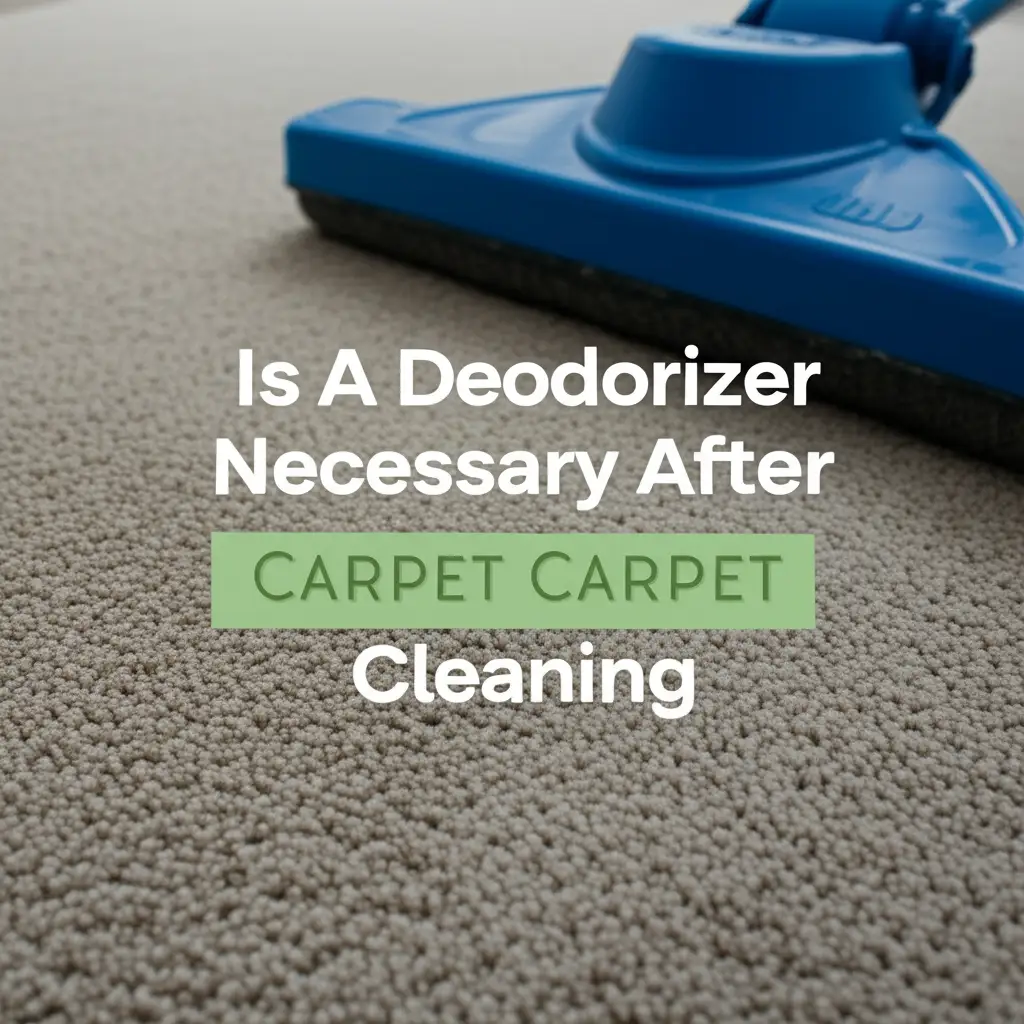· Elira Thomsen · Home Care · 13 min read
Does Steaming A Carpet Clean It

Deep Clean: Does Steaming Your Carpet Clean It?
Your carpet sees a lot of foot traffic. It collects dust, dirt, allergens, and even hidden grime over time. You might wonder if common cleaning methods truly tackle this deep-seated dirt. Many people look for effective ways to restore their carpets’ freshness and appearance. Steaming often comes up as a powerful solution.
Does steaming a carpet clean it effectively? This method is popular for deep cleaning. It uses hot water and specialized machines to extract dirt. In this article, we will explore exactly how carpet steaming works. We will discuss its many benefits and potential drawbacks. We will also provide a guide on how to steam clean your carpet. By the end, you will understand if steaming is the right choice for your home.
Takeaway:
- Yes, steaming a carpet cleans it deeply. It uses hot water extraction to remove dirt and allergens.
- Benefits include deep cleaning, sanitization, and odor removal. It is often chemical-free.
- Consider potential downsides like over-wetting and drying time. Certain carpet types need care.
- Proper technique is crucial for effective results and to prevent damage.
- Professional help may be best for heavily soiled or delicate carpets.
Does steaming a carpet clean it? Yes, steam cleaning, often known as hot water extraction, is one of the most effective methods for deep cleaning carpets. It uses high-temperature water and strong suction to remove embedded dirt, allergens, and grime, providing a thorough clean that goes beyond surface-level efforts.
Understanding Carpet Steam Cleaning: What It Is
When we talk about carpet steam cleaning, we are usually referring to a process called hot water extraction. This method involves using a specialized machine. This machine sprays hot water, often mixed with a cleaning solution, deep into the carpet fibers. This hot water loosens dirt, grime, and allergens.
After spraying, the machine immediately suctions the dirty water back up. This removes the soil and moisture from the carpet. It is different from true “steam” which is just vapor. Instead, it uses hot water for its cleaning power. This hot water extraction process cleans deeply. It gets rid of particles that regular vacuuming cannot reach.
This technique is effective because heat helps break down dirt and oils. The pressure helps flush out contaminants. The strong suction then ensures most of the moisture and dirt are removed. This leaves your carpet much cleaner. This method contrasts with dry cleaning for carpets, which uses minimal moisture or absorbent compounds. You can learn more about different cleaning methods here: Can you dry clean a carpet?. While some small devices are called “steam mops,” these are not typically used for full carpet cleaning. However, understanding their operation can help explain how hot water works on surfaces. For more on this, you can check out: Does steam mop work on carpet?. This method is designed to provide a truly deep clean. It addresses the embedded dirt that builds up over time.
How Steaming Deeply Cleans Your Carpet Fibers
Carpet steaming, or hot water extraction, excels at deep cleaning. It works by combining several powerful actions. First, the hot water itself helps lift dirt. Heat makes dirt and oils less sticky. This allows them to detach from the carpet fibers more easily. The water also penetrates deep into the carpet pile. It reaches beyond the surface where most vacuuming happens.
Next, the water pressure helps to dislodge stubborn particles. This pressure pushes the hot water and cleaning solution through the fibers. This flushes out deeply embedded dirt, dust mites, pet dander, and other allergens. These contaminants settle at the base of the carpet over time. Regular vacuuming often misses them. Steaming reaches these hidden areas.
Finally, the powerful vacuum suction is key. After the water has loosened and flushed out the dirt, the machine extracts it. It pulls up the dirty water along with the dissolved and dislodged particles. This process removes a significant amount of soil. It also helps to dry the carpet more quickly. This comprehensive approach is why hot water extraction is so effective. It can bring life back to old carpets. Even a carpet that is 10 years old can see significant improvement with this method. You might be surprised by how much dirt comes out, even from carpets that seem clean. For insights into cleaning older carpets, consider reading: Does cleaning 10 year old carpet work?. This method is also very good at tackling tough stains, including those from pets. You can find specific tips on removing such stains here: How to clean carpet stains pets.
The Advantages of Using Steam for Carpet Cleaning
Steaming a carpet offers many benefits beyond just making it look better. One major advantage is its ability to provide a truly deep clean. Unlike surface cleaning, hot water extraction reaches deep into the carpet fibers. It removes hidden dirt, dust, and allergens. This makes your home healthier. It reduces triggers for allergies and asthma.
Another significant benefit is its sanitizing power. The high temperature of the water helps to kill bacteria, germs, and dust mites. This creates a cleaner and more hygienic environment. For households with children or pets, this is especially valuable. You get peace of mind knowing your carpets are not just clean, but also sanitized.
Steaming is also excellent for odor removal. Pet odors, food spills, and general stale smells get trapped in carpet fibers. The hot water extraction process flushes out the source of these odors. It does not just mask them. This leaves your carpet smelling fresh and clean. Many steam cleaning methods can be done without harsh chemicals. This makes them safer for pets and children. Some people prefer using natural cleaning agents for their carpets, such as a mixture of ammonia and white vinegar. While effective for some spots, hot water extraction provides a more thorough clean. You can learn more about using natural solutions like ammonia and white vinegar here: Does ammonia and white vinegar clean carpet?. When considering various carpet cleaning methods, especially for machine-made carpets, steaming is often recommended for its deep cleaning capabilities. Explore more general carpet cleaning tips here: How to clean a machine-made carpet cleaning.
Potential Downsides and Things to Consider Before Steaming
While carpet steaming offers great benefits, it also has some potential downsides. It is important to be aware of these before you start. One common issue is over-wetting the carpet. If too much water is used, or if the suction is not strong enough, the carpet can become excessively wet. This prolonged moisture can lead to several problems.
Over-wetting significantly increases drying time. A very wet carpet can take 12-24 hours or even longer to dry completely. During this time, it is uncomfortable to walk on. It also poses a risk. Excess moisture creates an ideal environment for mold and mildew growth. Mold can cause health problems and leaves a musty smell. Ensuring good ventilation during and after cleaning is crucial to prevent this.
Another consideration is the type of carpet fiber. Some delicate materials, like wool, can be damaged by high heat or excessive moisture. Always check your carpet’s manufacturer recommendations before steaming. Certain cleaning solutions used with steam cleaners can also be problematic. Some chemicals might change carpet color or damage fibers. For instance, using vinegar on carpets needs careful consideration, as it can potentially alter color if not used properly. You can read more about this here: Does vinegar change carpet color?. If you have valuable or antique carpets, professional advice is recommended. Renting or buying a steam cleaner also involves a cost. Factor this into your decision. Sometimes, professional services are a better investment for large or sensitive areas.
Step-by-Step Guide: How to Properly Steam Clean Your Carpet
Steaming a carpet effectively requires a few key steps. Following these steps helps ensure a deep clean and prevents damage. First, thoroughly vacuum your entire carpet. This removes loose dirt, dust, and debris from the surface. Skipping this step means the steam cleaner will just push around surface dirt. For machine-made carpets, a thorough vacuum is always the first step. You can find more tips on cleaning these types of carpets here: How to clean a machine-made carpet cleaning.
Next, pre-treat any visible stains or heavily soiled areas. Use a suitable carpet pre-treatment solution. Let it sit for the recommended time, usually 5-10 minutes. This helps break down tough spots before the main cleaning. Once pre-treatment is done, prepare your steam cleaner. Fill its clean water tank with hot water. Add the recommended amount of carpet cleaning solution if your machine requires it. Do not overfill.
Now, begin steaming. Start at one end of the room and work backward. This prevents you from walking on cleaned areas. Move the machine slowly and steadily. Make one pass forward, spraying the solution. Then make a slow pass backward, immediately suctioning up the dirty water. Overlap each pass slightly to avoid missing spots. Focus on one small section at a time. After steaming, ensure good ventilation in the room. Open windows or use fans. This helps the carpet dry quickly and prevents mold growth. A general steam mop is not designed for full carpet cleaning, but understanding how its steam works on surfaces can be helpful. You can learn more about if a steam mop works on carpet surfaces here: Does steam mop work on carpet?.
When to Call a Professional Carpet Steamer
While DIY carpet steaming can be effective, there are times when calling a professional is the best choice. Professionals have powerful, commercial-grade equipment. These machines often have stronger suction and better heat control than rental units or home models. This results in a deeper clean and faster drying times. They can remove more embedded dirt and moisture.
Heavily soiled carpets, especially those that have not been cleaned in years, often require professional attention. DIY machines may not have the power to lift years of accumulated grime. Professionals also have access to a wider range of specialized cleaning solutions. They know which products are safe and effective for different carpet types and stains. They can tackle tough stains like those from pets more effectively. You can learn more about handling pet stains on carpets here: How to clean carpet stains pets.
Delicate or expensive carpets, such as wool or antique rugs, should ideally be handled by experts. They understand the specific care requirements for these materials. They can prevent damage like shrinking, color fading, or fiber distortion. If your carpet is 10 years old or more, a professional cleaning can often bring it back to life more effectively than a home machine. For example, understanding if cleaning an old carpet works often depends on the method used. Professionals greatly increase the chances of success. Read more about cleaning old carpets here: Does cleaning 10 year old carpet work?. Finally, if you notice persistent odors, especially pet odors, or have large areas to clean, a professional service saves you time and effort while ensuring the best possible results.
Maintaining Your Carpet’s Cleanliness After Steaming
After your carpet has undergone a thorough steam cleaning, keeping it clean helps extend its freshness. Regular maintenance prevents rapid re-soiling. This protects your investment and keeps your home looking good. First, continue to vacuum your carpet regularly. Aim for at least once or twice a week, depending on foot traffic and pet presence. Regular vacuuming removes loose dirt and debris before it can settle deep into the fibers.
Address spills and stains immediately. The quicker you act on a spill, the easier it is to remove. Keep a carpet spot cleaner handy. Blot spills gently with a clean cloth. Avoid rubbing, as this can spread the stain and damage carpet fibers. Use a clean white cloth or paper towels. Press firmly to absorb the liquid.
Consider placing doormats at all entrances to your home. These mats trap dirt and moisture from shoes. This prevents much of it from reaching your carpet. Regularly clean these doormats too. Encourage family members and guests to remove shoes when entering. This significantly reduces the amount of outdoor dirt brought inside. Finally, be mindful of foot traffic on your carpets. If certain areas receive heavy use, consider placing rugs or runners. These can protect the carpet underneath from excessive wear and dirt. Regular, light cleaning habits prolong the effects of a deep steam clean. This helps your carpet stay cleaner for longer periods.
FAQ Section
Is steam cleaning good for carpets?
Yes, steam cleaning (hot water extraction) is very good for carpets. It offers a deep clean that removes embedded dirt, allergens, and odors. The high heat also sanitizes, killing bacteria and dust mites. This method helps prolong the life and appearance of your carpet.
How often should I steam clean my carpet?
The frequency depends on factors like foot traffic, pets, and allergies. Generally, most homes benefit from professional steam cleaning every 12-18 months. High-traffic areas or homes with pets or allergy sufferers may need it every 6-12 months.
Can steam cleaning remove old stains?
Steam cleaning can be very effective on many old stains, especially when combined with appropriate pre-treatments. Its hot water and powerful suction can break down and extract stubborn residues. However, some very old or set-in stains, or those from certain dyes, may not be entirely removable.
What are the risks of steaming my carpet?
The main risks include over-wetting, which can lead to longer drying times and potential mold growth. Excessive heat can also damage certain delicate carpet fibers like wool. Improper use or choosing the wrong cleaning solution can also lead to residue buildup or discoloration.
Does steaming kill germs in carpet?
Yes, the high temperature of the water used in steam cleaning is effective at killing germs, bacteria, viruses, and dust mites. This sanitizing action helps improve indoor air quality and creates a healthier living environment, especially for those with allergies or sensitivities.
Is steam cleaning better than shampooing?
Many experts consider steam cleaning (hot water extraction) superior to traditional carpet shampooing. Shampooing can leave behind a sticky residue that attracts dirt quickly. Steam cleaning, especially with thorough rinsing, removes both dirt and cleaning solution, leading to a cleaner carpet that stays clean longer.
Conclusion
We have explored the question: Does steaming a carpet clean it? The answer is a resounding yes. Hot water extraction, commonly known as steam cleaning, is a powerful and effective method. It goes beyond surface cleaning. It reaches deep into carpet fibers to remove embedded dirt, allergens, and even lingering odors. We learned about its benefits, including deep sanitization and its often chemical-free nature. We also discussed important considerations, like avoiding over-wetting and protecting delicate carpet types.
Remember, proper preparation and technique are key for successful home steaming. For the toughest jobs, or for peace of mind, professional carpet cleaners offer advanced equipment and expertise. Regular vacuuming and immediate spill cleanup are essential maintenance steps after steaming. By understanding how steam cleaning works and applying best practices, you can ensure your carpets remain fresh, clean, and contribute to a healthier home environment. Give your carpets the deep clean they deserve.





